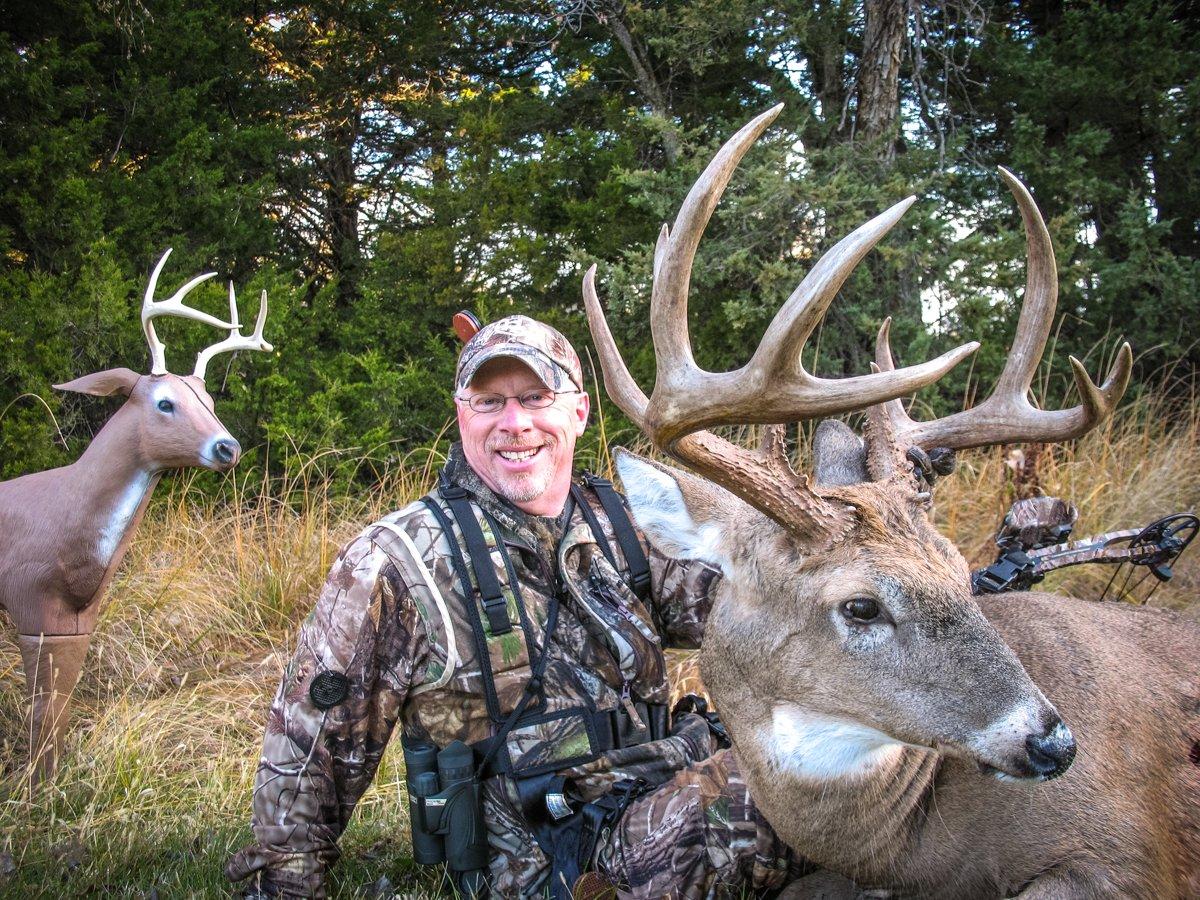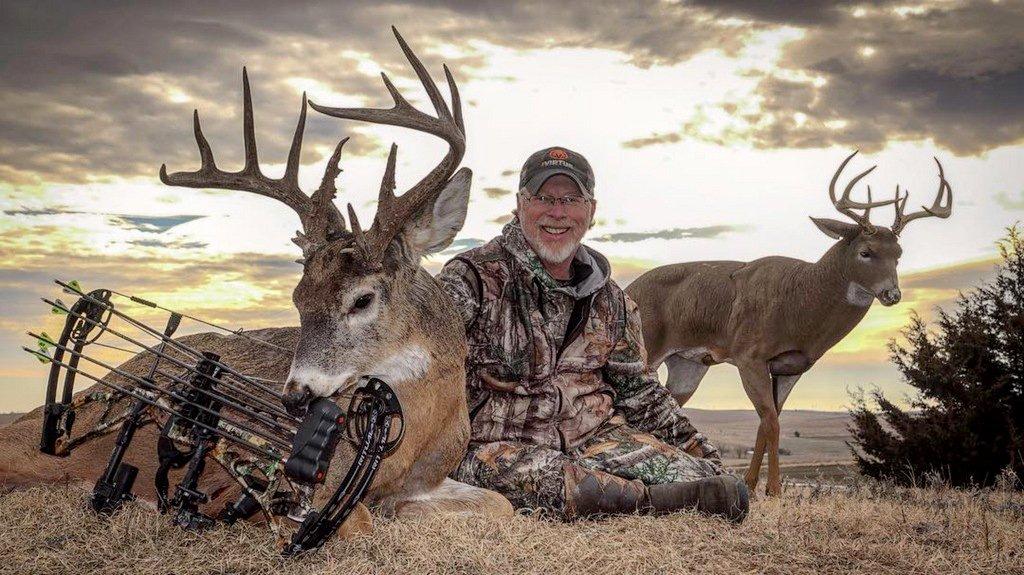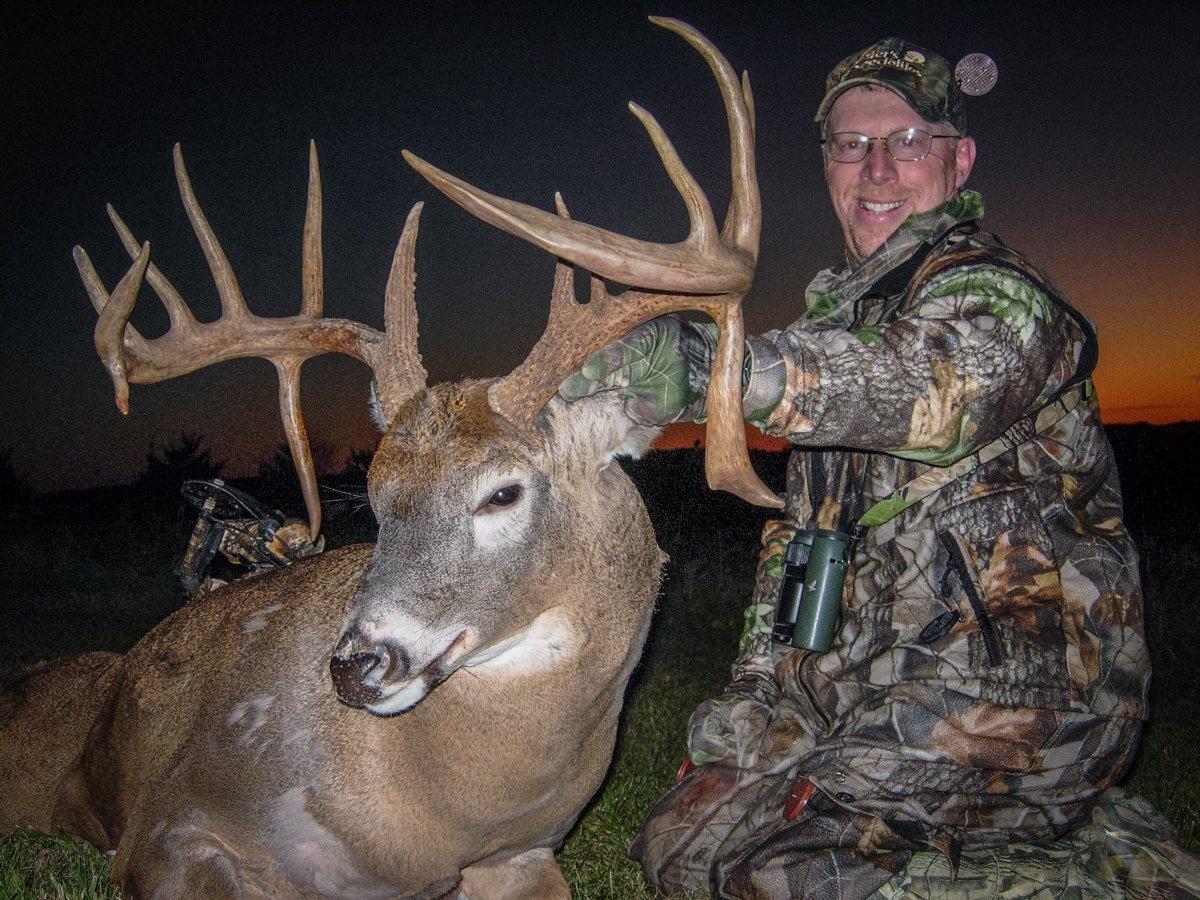Phillip Vanderpool loves decoying in big bucks, and he shared his best advice with us just in time for the rut
Blood-shot eyes rolling back in their sockets. Tattered ears pinned backward. Snort-wheezes erupting. And then — a good whoopin'.
Those are the sights you can look forward to when hunting with a buck decoy during the rut and Phillip Vanderpool, host of The Virtue, wants to help you make it happen. Here are his top 10 tips for duping rut-crazed bucks with an antlered deke.
1. Be Smart About Scent Control
Controlling your scent is the No. 1 rule of decoying deer. It's imperative to wear both rubber gloves and rubber boots when setting up the decoy. Scent-A-Way is the best way to minimize scent once in the field. Spray both yourself and the decoy thoroughly in order to kill human odor.
The deer will want to come in downwind, Vanderpool says. Make sure there isn't any scent left behind for them to detect.
Do you already have a surefire pre-rut or rut spot you'd like to use a decoy? Minimize both scent and noise by packing in the decoy ahead of time and leaving it close to your setup. Keep it concealed so it doesn't spook deer while you're away.
2. Stink it Up
On the topic of scent, smells aren't all bad—as long as they're the right ones. Remember, the buck is going to come in downwind, and he's going to expect to smell your rival deer. So up your odds by adding a little stink to the deke.
Use doe urine on the head of the buck decoy, Vanderpool says. Put dominant buck scent on the back legs, around the hocks, and on the ground around its feet.
Bonus Tip: The most effective time to decoy is during the seeking phase of the rut. This is when all of the big boys are on their feet looking for that first estrous doe. Seeing a big buck invade their space that they aren't familiar with will often provoke a fight.
3. Call Him In
Calling can be a great supplement to add realism to your decoy. You already have both sight and smell, and a little noise can help, too. Adding vocalizations might just be enough to draw that buck in when, without it, he would have been reluctant.
Use rattling, grunts and snort-wheezes in conjunction with your decoying, Vanderpool says. It makes it even more realistic when that buck rounds the bend and sees the intruder that's invaded his territory.
4. Create a Line of Sight
Vanderpool says visibility is crucial for decoying deer, and the only way to ensure a buck sees your decoy is to make sure that you put it in an open spot. Don't wedge your decoy into an overgrown shooting lane or around the corner from a travel route.
I have found it fairly unproductive to decoy in tight areas where visibility is limited, Vanderpool says. Bucks can't see the decoy as well in such areas. And when they do, they always seem to be hesitant about committing. If you want to deploy a decoy, do it in the open. Positioning is everything.
Bonus Tip: Keep the decoy within 20 yards of your location. Any farther than that will be too far for a good shot if the buck hangs up.
5. Be Open About It
Keep in mind where deer will likely be coming from. Place the decoy in the open so it will draw a buck past you. Make it obvious. The objective is not to surprise them, but to allow them to see it from a distance so they can get worked up while they close the gap.
I like to decoy in open fields, but every now and then, I like to decoy in timber as well, Vanderpool says. But it has to be open timber. Very open timber. It coincides with visibility. A buck likes to be able to see his opponent from a distance before closing in for a confrontation.
6. Provide an Escape Route
This is where some hunters go wrong. They will place the buck with its back right up against a wall of vegetation and foliage expecting a deer to come maul it. Don't forget to leave a 360-degree buffer zone all the way around your setup. Why? A buck might not engage if he doesn't see multiple exits, Vanderpool says. A deer needs a way to escape if he comes out on the losing end.
Bonus Tip: If the situation allows, you want to place the decoy facing downwind. You also want it quartering slightly toward your position.
7. Read Between the Signs
Body language is extremely important when decoying whitetails. You should be able to guess what the buck is going to do before he does it. Keep in mind that not every buck will react the same way to a decoy. They are much like humans in that they all have unique personalities.
If a buck is acting nervous and is sub-dominant, hold low on the vitals, Vanderpool says. You don't want him jumping the string. If he comes waltzing in all bristled up and ready to fight, hold right on. He is focused on the decoy and probably won't react much to the shot.
8. Select a Good Setup
This pretty much goes without saying, but stand or blind placement is very important. Make sure the area you want to decoy has adequate spots to hang a stand or the resources to brush in a blind. If it doesn't, choose another spot.
Hunting with a decoy can be tough, Vanderpool says. Everything has to play together for it to work out, which means stand location is not something to overlook when trying to lure in a mature deer.
Keep in mind typical wind patterns, travel routes and the location of the sun. If the circumstances allow, you want the sun at your back. That's not always possible, but it's to your advantage when it is.
Bonus Tip: Most bucks will want to get the wind in their favor before committing to a decoy. If they are dominant, they will come in head on. If not, they will likely approach the decoy from the rear. By having the decoy quartering slightly toward the hunter, it provides the desired quartering-away shot when the buck comes in face-to-face with the intruder decoy.
9. Be Patient
This is most hunters' Achilles heel. A buck brawl isn't going to happen every time you go into the field. (But when it does, it's a wild ride.)
A lot of people give up too early and don't give a decoy time to work, Vanderpool says. It's not magic. It won't always work. But when your heart is racing and you see it happen, emotions run off the charts.
10. Stop the Buck Here
Sometimes a buck will not stop, even if you do grunt at him, and you won't get a shot before the oncoming whitetail demolishes your decoy. The only thing to do is let him hit the decoy.
If he kills the decoy and spooks, get ready, Vanderpool says. Nine times out of 10 he will run a few yards before stopping to turn and look. Draw your bow just as he hits the decoy. When he stops, it will likely be a quartering-away shot. Take the shot now. It won't be a very big window. You will have to take the shot just as he stops to turn and look.
It's confusing for bucks to see the fight end so quickly. That's why they stop and turn to look. As they say, curiosity killed the cat.
Bonus Tip: Decoying can be your ace card if you prefer a high-impact style of hunting. Done right, it keeps the deer's attention off of you and lures them in close.
Don't Miss: Can You Talk Deer?
Check out more stories, videos and educational how-to's on deer hunting.










